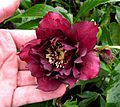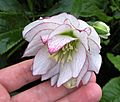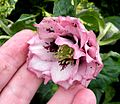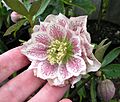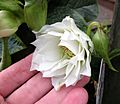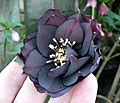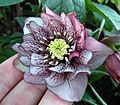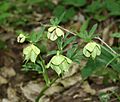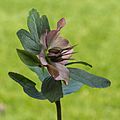Hellebore facts for kids
Commonly known as hellebores the Eurasian genus Helleborus consists of approximately 20 species of herbaceous or evergreen perennial flowering plants in the family Ranunculaceae, within which it gave its name to the tribe of Helleboreae. Despite names such as "winter rose", "Christmas rose" and "Lenten rose", hellebores are not closely related to the rose family (Rosaceae). Many hellebore species are poisonous.
Contents
Distribution and description
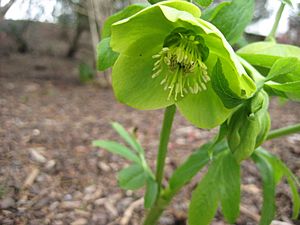
Various species of this genus originated in Europe and Asia. The greatest concentration of species occurs in the Balkans. One atypical species (H. thibetanus) comes from western China; another atypical species (H. vesicarius) inhabits a small area on the border between Turkey and Syria.
The flowers have five petal-like sepals surrounding a ring of small, cup-like nectaries which are actually "petals" modified to hold nectar. The sepals do not fall as petals would, but remain on the plant, sometimes for many months. Recent research in Spain suggests that the persistence of the sepals contributes to the development of the seeds (Herrera 2005).
Hybrid hellebores gallery
Species hellebores gallery
Images for kids
-
H. niger with fruits and flowers in two different stages
See also
 In Spanish: Helleborus para niños
In Spanish: Helleborus para niños




